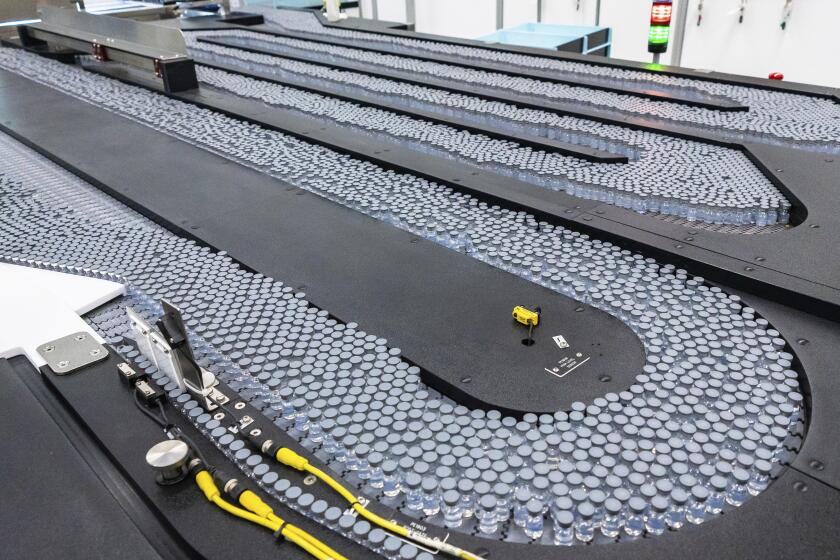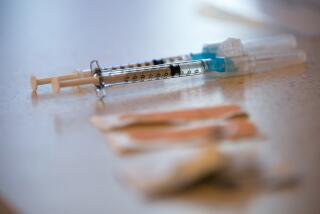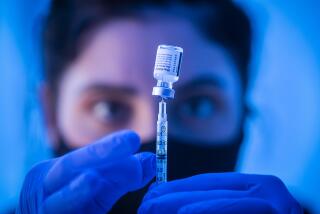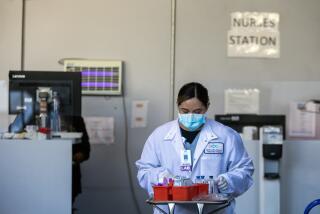California ends coronavirus testing requirements for certain unvaccinated workers
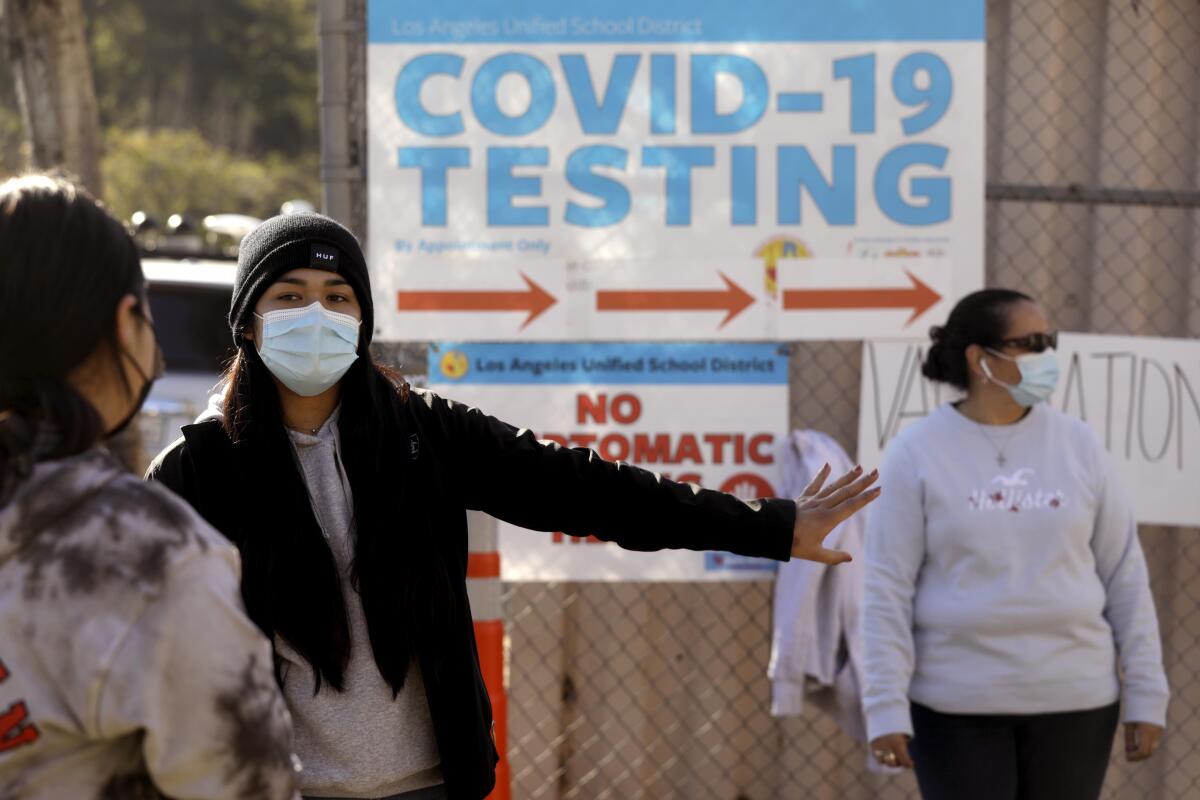
- Share via
California has rescinded coronavirus testing requirements for unvaccinated workers at schools, healthcare facilities and other congregate settings, the latest rule to be rolled back as the state enters what officials say is a new phase of the pandemic.
The changes, which took effect Saturday, mean employees in those fields who have not completed their primary COVID-19 vaccine series will no longer need to undergo weekly tests.
Unvaccinated state employees who work in “non-high-risk settings” also no longer need to test weekly, according to a memo from the California Department of Human Resources.
Such surveillance screening once represented a major pillar of California’s pandemic response. However, the benefits of the practice have become less pronounced — a result both of relatively widespread vaccination coverage and the proliferation of hyper-infectious Omicron subvariants.
“We’ve entered a phase of the pandemic where the majority of people in these workplace settings are vaccinated, and our youngest Californians are now eligible for vaccination too, which protects all of our communities against severe illness, hospitalization and death,” said Dr. Tomás Aragón, director of the California Department of Public Health. “While unvaccinated individuals remain at greatest risk of serious health consequences from COVID-19 infection, weekly testing of unvaccinated groups is no longer slowing the spread as it did earlier in the pandemic due to the more infectious Omicron variants.”
The Department of Public Health is moving toward ending its recommendation for universal masking in indoor public settings and businesses if coronavirus cases continue to fall.
Though the state has scrapped the weekly testing requirement, health officials still encourage schools and employers “to continue providing testing resources to staff and students to slow the spread of COVID-19 in all communities,” according to a statement from the California Department of Public Health.
“Vaccination and testing are two key measures that help mitigate the spread of COVID-19, as is masking and improving indoor ventilation,” the statement continued.
Since the initial Omicron surge faded this spring, many efforts focused principally on preventing transmission — such as mandatory masking and regular testing — have gone by the wayside.
While the state still strongly recommends wearing masks in indoor public settings, the vast majority of Californians have been under no obligation to do so since late last winter, save for in select places such as healthcare settings, correctional facilities, and emergency or homeless shelters.
The updated bivalent COVID-19 booster shots are available at more than 1,500 sites in Los Angeles County. Here’s how to get one.
Officials regularly acknowledge that, as conditions change, so should the public health response. In L.A. County, for instance, transmission has fallen to the point that officials could end the local masking requirement for indoor public transportation settings — including airport terminals, buses, subways, train stations and ride-hailing services — in a matter of weeks.
That’s not to say the situation couldn’t reverse, especially heading into the fall and winter when another coronavirus wave is possible.
But given the protection afforded by vaccines, as well as the availability of effective therapeutics and updated boosters, officials and experts say California has many tools to combat a potential resurgence.
“This is a hopeful moment in the COVID pandemic, with the [World Health Organization] noting that, with continued attention to reducing risk and increasing vaccination coverage, there is the possibility of ending the pandemic,” L.A. County Public Health Director Barbara Ferrer said during a recent briefing. “In L.A. County, risk is lower than it was for much of the summer, and as we head into this fall with these updated booster doses, we know that we have the opportunity to reduce the likelihood of overwhelming our healthcare system with another winter surge.”
More to Read
Sign up for Essential California
The most important California stories and recommendations in your inbox every morning.
You may occasionally receive promotional content from the Los Angeles Times.

